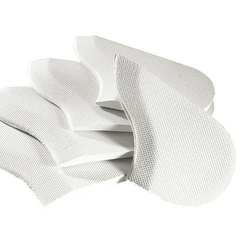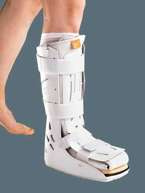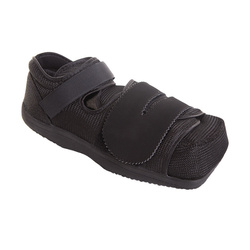Orthopedic shoes
( number of products: 34 )Orthopedic shoes and shoe orthotics for foot conditions
When treating conditions of the foot, such as diabetic foot, or for prophylactic use, orthopedic shoes or shoe orthotics are your best bet. Speak with a doctor and ask which model is best for your specific condition.
Who are orthopedic shoes best suited for?
In most cases, orthopedic and prophylactic shoes are often recommended for people who have issues with maintaining proper posture, have plantar fasciitis or other problems with their lower limbs. However, it is best to consult with an orthopedist, podologist or any other trained specialist who treats foot conditions, such as diabetic foot problems.
Orthopedic shoes and orthotic boots may also be worn by people who have high-risk professions, work long hours on their feet, or while sitting and experience foot pain and signs of more serious foot conditions. Before deciding on shoe orthotics or a walker boot, speak with a specialist, as they’ll recommend the right type of footwear for treating your specific condition. In some cases, it isn’t about choosing correct orthopedic shoes, but insoles.
What are the benefits of orthopedic footwear?
Usually, specialized footwear is used to prevent posture defects or to help improve posture if abnormalities already exist. Orthopedic shoes are often recommended for children who suffer from excessively pronated feet. The sufferer no longer needs to wear a Thomas heel, which is designed to fix the development of the foot, as it is already built into the orthopedic shoes.
Prophylactic footwear and orthopedic insoles are meant to distribute the body’s weight off of the overburdened foot and onto the one that is less used. Such orthopedic shoes and shoe orthotics prevent severe pain of the feet, but also in less common areas, such as around the pelvis or spine. Prophylactic footwear and orthotic boots can also correct defects that may be caused by certain injuries.
How to choose the right orthopedic shoes?
All orthopedic footwear and shoe orthotics that are available have to pass certain standards regarding both the quality of the materials and their design. For example, prophylactic orthopedic footwear should differ from those which are made for treating conditions that already exist. And no matter whether you’re looking for a walker boot, bunion boot or a walking brace, always speak with a specialist before making a purchase.
Since our orthopedic footwear is made of certified materials, you can expect a comfortable recovery. They don’t irritate the skin and do not cause abrasions that can become painful and possibly infected. You have the option to go through a number of models and different insoles - this applies to choosing preventive footwear and shoes for treating current conditions.
All footwear models available are easy to clean, and some may even be made of unique materials, such as silver ions, which eliminate unpleasant smells and remove sweat. Before you decide to clean your clean orthopedic shoes yourself, see the manufacturer's instructions.
If you suffer from specific conditions, such as diabetic foot, ask your doctor for their recommendation of footwear. In some cases, choosing a walker boot or walking brace isn’t as important as selecting the right shoe orthotics. A popular model for women is the Medi Igli Business Silver - which is a thin and light orthopedic insole, designed for women's footwear. And a profiled insole for men's shoes is also available.

Airstep walker wedges - Achilles injury support Orthoservice
- 1
- 2



















